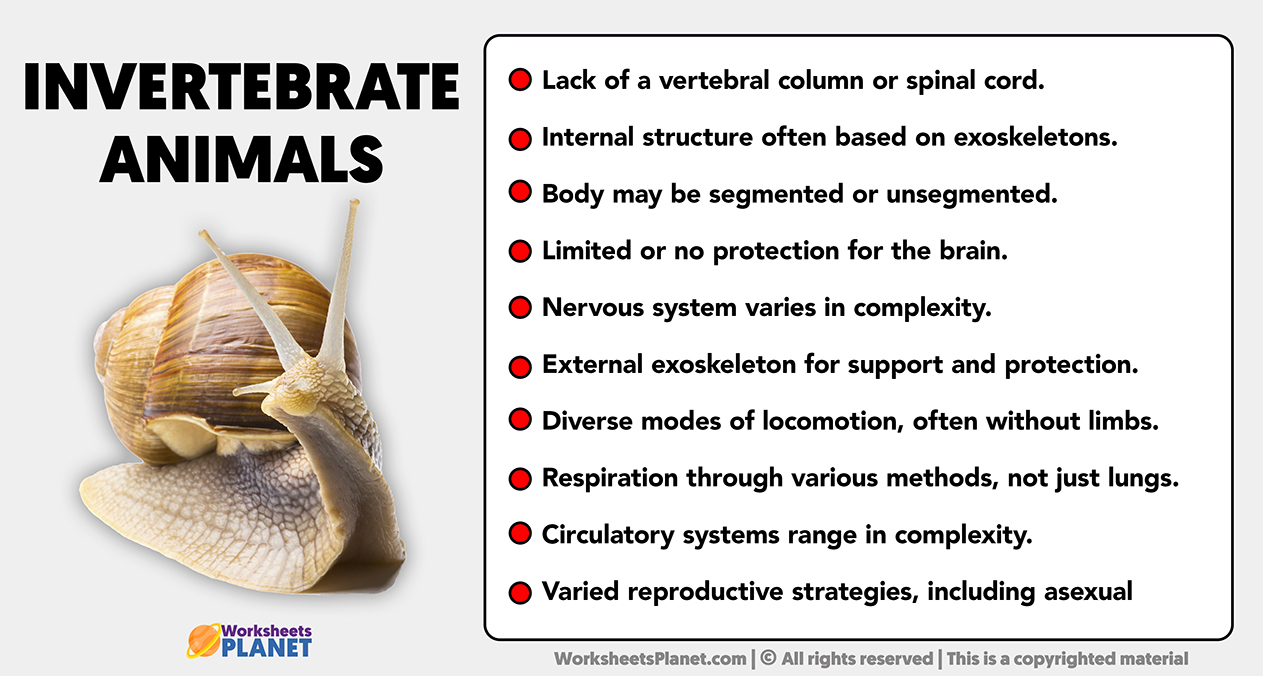Invertebrate animals comprise a vast and diverse group lacking a vertebral column or backbone. This group includes arthropods (such as insects, arachnids, and crustaceans), mollusks (like snails, clams, and octopuses), annelids (such as earthworms and leeches), and many other phyla.
Invertebrates represent the majority of animal species and exhibit diverse body plans, ranging from simple organisms like sponges to complex forms like insects. They play vital roles in ecosystems, contributing to biodiversity and ecological processes.

Main Characteristics of Invertebrate Animals
- Lack of a vertebral column or spinal cord.
- Internal structure often based on exoskeletons.
- Body may be segmented or unsegmented.
- Limited or no protection for the brain.
- Nervous system varies in complexity.
- External exoskeleton for support and protection.
- Diverse modes of locomotion, often without limbs.
- Respiration through various methods, not just lungs.
- Circulatory systems range in complexity.
- Varied reproductive strategies, including asexual

